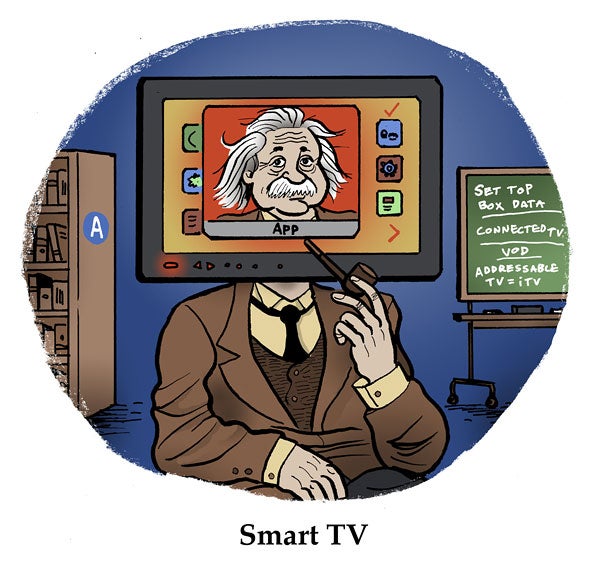Walmart’s highly anticipated acquisition of Vizio still awaits regulatory approval. In the meantime, the smart TV maker shared its Q4 earnings results with investors on Tuesday, but skipped an earnings call and guidance due to the pending deal.
Its letter to shareholders touts how far Vizio has come in its evolution “from a hardware company into a CTV platform.”
Even though hardware sales still make up a majority of Vizio’s overall revenue, its earnings report suggests Vizio’s ads business is what makes the company profitable – and, therefore, an attractive acquisition target as Walmart looks to strengthen its ads business.
In Q4, Vizio made $174 million in revenue and $105 million in profits from ad sales and content distribution combined (its “platform” business), a 28% and 27% YOY increase, respectively. Advertising revenue in particular rose 36% compared to this time last year.
The spike in ad revenue would explain why Vizio’s average revenue per user grew 15% YOY to $32.48.
Ad revenue seems to be steadily rising despite Vizio’s relatively small user base. It added only 1.1 million active accounts in 2023, bringing its total to 18.5 million. (For the sake of comparison, Roku has 80 million monthly active accounts.)
But advertisers have a good reason for spending more money on Vizio anyway: data.
Aiming for ACR
More specifically, automatic content recognition (ACR) underpins Vizio’s ad sales.
ACR, which refers to technology that identifies what content a viewer is watching, is a core piece of the TV measurement puzzle – which is why just about all of the top measurement providers license ACR data from Vizio’s data science subsidiary, Inscape … for now, at least. (Fun fact: Vizio won an EMMY award for this data last year.)
ACR is also a competitive advantage because it’s not compatible between smart TV makers. Vizio’s ACR is only applicable for Vizio ad buys, which is, in part, why more advertisers are choosing to buy Vizio supply directly.
For example, unlike programmatic buys, direct deals allow brands to secure home screen inventory or title sponsorships, using Vizio’s ACR for targeting and measurement. Buying from Vizio also makes it possible for brands to compare how campaigns perform across different streaming apps on Vizio TVs, which they can’t do when buying supply from individual apps.
The company’s direct advertising relationships rose 32% YOY after adding 117 new marketer clients in Q4.
Over the garden walls
But perhaps the biggest allure of ACR data is its potential to link TV ad exposures to real-world outcomes.
With control over both Vizio’s streaming supply and its own shopper data, Walmart can use ACR to determine which TV campaigns helped increase online or in-store sales. The retail giant can also use that data to plan more targeted ads for Walmart products directly into Vizio TV households.
The promise of closed-loop attribution should help Walmart prove that TV ads are actually leading to sales, which should, in turn, bring more advertisers into Walmart’s walled garden.
Assuming the acquisition makes it past regulators, Walmart will get to reap the rewards of a profitable data and ads business that strengthens its position as an adversary to Amazon, which is also competing in both the CTV and retail media arenas.
















